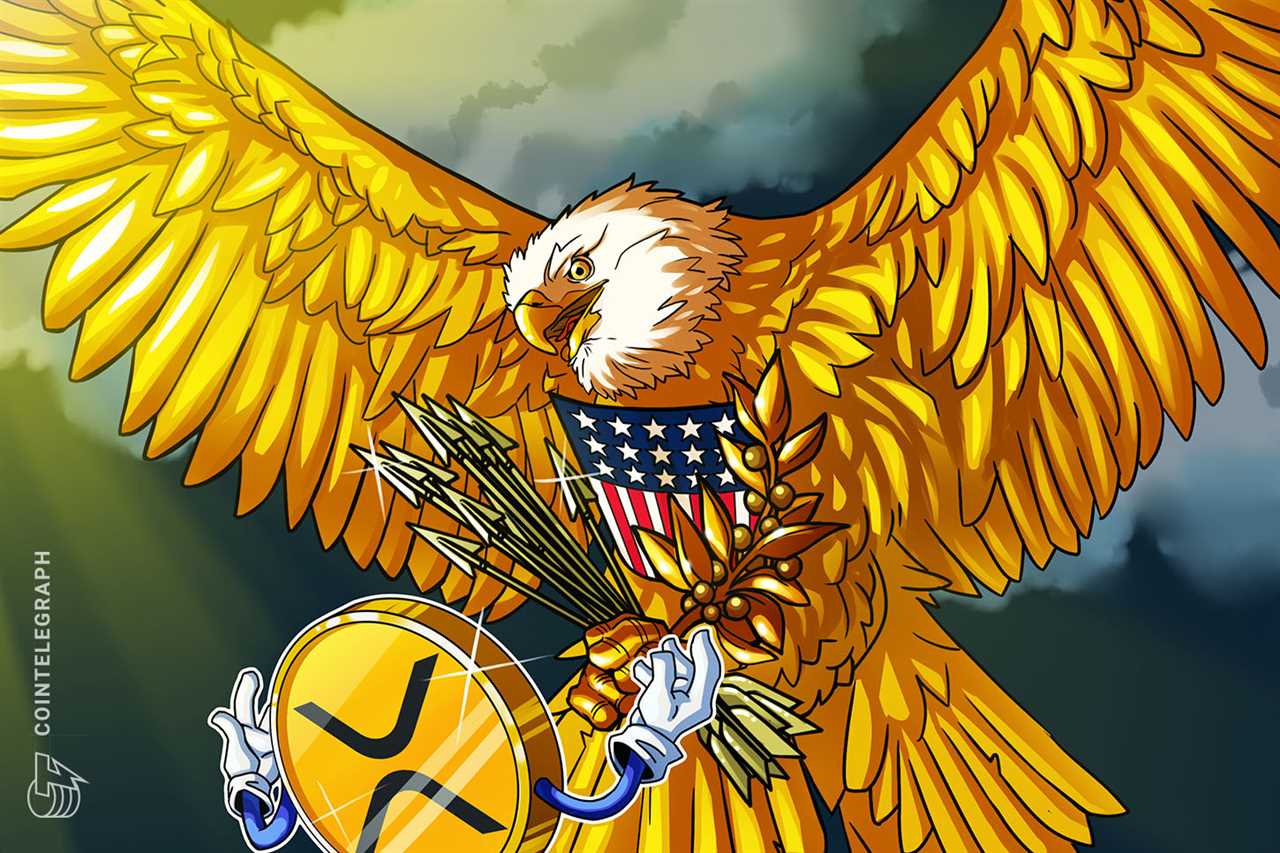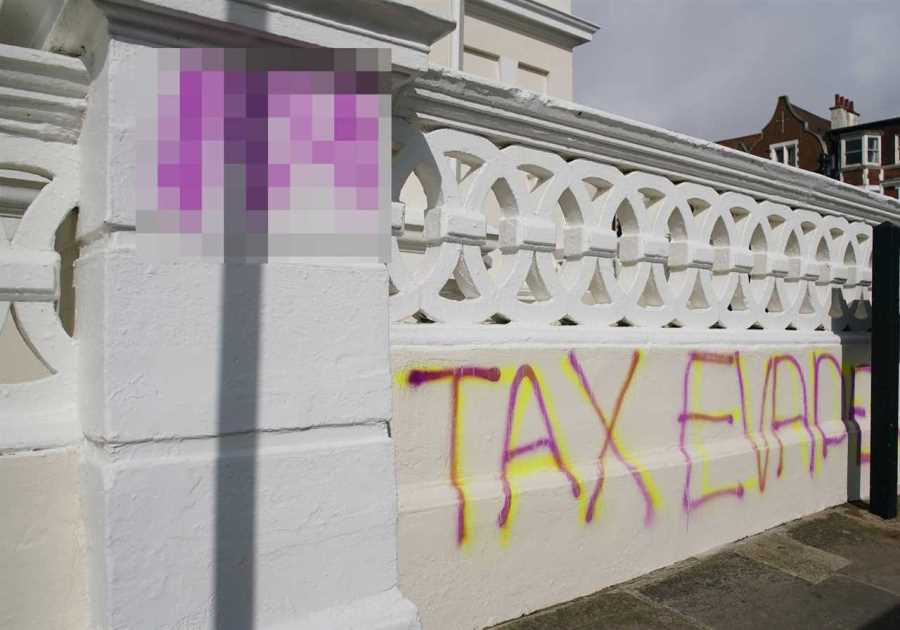
The U.S. Securities and Exchange Commission has not been kind to crypto in the past year. In March 2020, in the SEC v. Telegram case, the Commission won a worldwide injunction against the proposed issuance of Grams by Telegram, undoing years of innovative work even in the absence of any allegations of fraud. Then, on the last day of September 2020, Judge Alvin K. Hellerstein dashed the hopes of Kik Interactive by ruling in favor of the SEC’s motion for summary judgment in SEC v. Kik Interactive, halting the sale of Kin crypto tokens. Both of these actions were filed in the Southern District of New York. On Dec. 22, 2020, the SEC decided that it was time to initiate another high-profile action, filing in the same district against Ripple Labs and its initial and current CEOs, Christian Larsen and Bradly Garlinghouse, respectively, for raising more than $1.38 billion through the sale of XRP since 2013.
The initial fallout from this action has been swift and severe: 24 hours after the lawsuit was filed, the price of XRP was down almost 25%. This still left XRP ranked fourth on CoinMarketCap, with a total market capitalization of over $10.5 billion.
The complaint
In its complaint, the Commission paints a straightforward pattern of sales of XRP that were never registered with the SEC or made pursuant to any exemption from registration. From the perspective of the Commission, this amounts to a sustained practice of illegal sales of unregistered, non-exempt securities under Section 5 of the Securities Act of 1933.
For readers not familiar with legal procedure, it might seem unusual for the case to be brought in a New York federal court, especially since Ripple is headquartered in California, and both named individuals reside there. However, Ripple has an office in the Southern District of that state, some statements were made by Garlinghouse while he was present in New York, and significant sales of XRP were made to New York residents. In legal parlance, this would make venues in the Southern District of New York appropriate.
In addition, it might be surprising to some that both Larsen and Garlinghouse were named personally in an action that seeks primarily to recover for XRP allegedly sold illegally by Ripple, through its wholly-owned subsidiary, XRP II LLC. They are named both because they individually also sold significant volumes of XRP — 1.7 billion by Larsen and 321 million by Garlinghouse — and because the SEC contends they “aided and abetted” Ripple in its sales.
Aiding and abetting is a cause of action that depends on a primary violation by a third party, in which the aider and abettor voluntarily and knowingly participates with the goal of assisting in the venture’s success. In this case, Ripple would be the primary violator, and both Larsen and Garlinghouse are alleged to have substantially participated in the pattern of Ripple’s XRP sales, with the goal of allowing the company to raise funds without registering XRP under the federal securities laws or complying with any available exemption from registration.
The bulk of the complaint provides an overview of digital assets, details the SEC’s version of the history of Ripple and its marketing efforts with regard to XRP, illustrates how in the opinion of the Commission, XRP satisfies the elements of the Howey investment contract test under the federal securities laws, and seeks to demonstrate how Larsen and Garlinghouse participated in the on-going sales efforts.
In addition to disgorgement of all “ill-gotten gains,” the requested order would permanently ban the named defendants from ever selling unregistered XRP or participating in any way in the sale of unregistered, non-exempt securities. It would also prohibit them from participating in the offering of any digital asset securities, and it seeks unspecified civil monetary penalties.
A brief history of Ripple and XRP
The idea behind the current XRP dates back to late 2011 or early 2012, before the company changed its name to Ripple. The XRP Ledger, or software code, operates as a peer-to-peer database, spread across a network of computers that records data about transactions, among other things. In order to achieve consensus, each server on the network evaluates proposed transactions from a subset of nodes it trusts not to defraud it. Those trusted nodes are known as the server’s unique node list, or UNL. Although each server defines its own trusted nodes, the XRP Ledger requires a high degree of overlap between the trusted nodes chosen by each server. To facilitate this overlap, Ripple publishes a proposed UNL.
Upon the completion of the XRP Ledger in December 2012, and as its code was being deployed to the servers that would run it, a fixed supply of 100 billion XRP was set and created at little cost. Of those XRP, 80 billion were transferred to Ripple and the remaining 20 billion XRP went to a group of founders, including Larsen. At this point in time, Ripple and its founders controlled 100% of XRP.
Note that these choices represent a compromise between the fully decentralized, peer-to-peer network that was envisioned when Bitcoin (BTC) was first announced and a fully centralized network with a single trusted intermediary such as a conventional financial institution. In addition, Bitcoin was never designed or intended to be held or controlled by a single entity. In contrast, all XRP was originally issued to the company that created it and that company’s founders. This hybrid approach to a blockchain-based digital asset and more conventional assets created and controlled by a single entity led some crypto enthusiasts to complain that XRP was not a “true” cryptocurrency at all.
According to the SEC’s complaint, from 2013 through 2014, Ripple and Larsen made efforts to create a market for XRP by having Ripple distribute approximately 12.5 billion XRP through bounty programs that paid programmers compensation for reporting problems in the XRP Ledger’s code. As part of these calculated steps, Ripple distributed small amounts of XRP — typically between 100 and 1,000 XRP per transaction — to anonymous developers and others to establish a trading market for XRP.
Ripple then began more systematic efforts to increase speculative demand and trading volume for XRP. Starting in at least 2015, Ripple decided that it would seek to make XRP a “universal [digital] asset” for banks and other financial institutions to effect money transfers. According to the SEC, this meant that Ripple needed to create an active, liquid XRP secondary trading market. It, therefore, expanded its efforts to develop a use for XRP while increasing sales of XRP into the market.
At about this time, Ripple Labs, and its subsidiary, XRP II LLC, came under investigation by the U.S. Financial Crimes Enforcement Network, or FinCEN, acting pursuant to its mandates in the Bank Secrecy Act, or BSA. Acting in conjunction with the U.S. Attorney’s Office for the Northern District of California, the two companies were charged with failing to comply with various BSA requirements, including failure to register with FinCEN and failure to implement and maintain proper Anti-Money Laundering and Know Your Customer protocols. According to FinCEN, Ripple’s failure to comply with these FinCEN requirements was facilitating the use of XRP by money launderers and terrorists.
This action did not proceed to trial, with Ripple Labs settling the charges by agreeing to pay a $700,000 fine and further agreeing to take immediate remedial steps to bring the companies into compliance with BSA requirements. The settlement was announced by FinCEN on May 5, 2015. The major contention of FinCEN throughout its investigation was that XRP was a digital currency. Ripple acceded to this position and has since worked to comply with BSA requirements.
At the same time, as noted in the SEC’s complaint, from 2014 through the third quarter of 2020, the company sold at least 8.8 billion XRP in the market and institutional sales, raising approximately $1.38 billion to fund its operations. In addition, the complaint asserts that from 2015 through at least March 2020, while Larsen was an affiliate of Ripple as its CEO and later chairman of the board, Larsen and his wife sold over 1.7 billion XRP to public investors in the market. Larsen and his wife netted at least $450 million from those sales. From April 2017 through December 2019, while an affiliate of Ripple as CEO, Garlinghouse sold over 321 million XRP he had received from Ripple to public investors in the market, generating approximately $150 million from those sales.
XRP is not like Bitcoin or Ether
The preceding description paints a picture of a digital asset that is widely held by persons scattered around the globe. In the case of both Bitcoin and Ether (ETH), this kind of decentralization was apparently enough to convince the SEC that those two digital assets should not be regulated as securities. As Director Bill Hinman of the SEC’s Division of Corporation Finance explained in June of 2018:
“If the network on which the token or coin is to function is sufficiently decentralized — where purchasers would no longer reasonably expect a person or group to carry out essential managerial or entrepreneurial efforts — the assets may not represent an investment contract. Moreover, when the efforts of the third party are no longer a key factor for determining the enterprise’s success, material information asymmetries recede. As a network becomes truly decentralized, the ability to identify an issuer or promoter to make the requisite disclosures becomes difficult, and less meaningful. […] The network on which Bitcoin functions is operational and appears to have been decentralized for some time, perhaps from inception. Applying the disclosure regime of the federal securities laws to the offer and resale of Bitcoin would seem to add little value.”
This kind of analysis does not really work for XRP, most of which continues to be owned by the company that created it, where the company continues to have significant influence over which nodes will serve as trusted validators for transactions, and where the company continues to play a significant role in the profitability and viability of the asset. Part of that role will now, of course, involve responding to this latest SEC initiative.
The court’s probable reaction
Unfortunately for Ripple and its former and current CEOs, the SEC has a strong case that XRP fits within the Howey investment contract test. Derived from the 1946 Supreme Court decision in SEC v. W. J. Howey, this test holds that you have bought a security if you: (1) make an investment (2) of money or something else of value, (3) in a common enterprise, (4) with the expectation of profits, (5) from the essential managerial efforts of others. Most of the purchasers of XRP, or certainly a very large number of them, would appear to fit within each of these categories.
Ripple raised more than $1.38 billion from the sale of XRP, so it is abundantly clear that purchasers were paying something of value. Moreover, as there was no effort to limit purchasers to the amount of XRP that they might reasonably “use” for anything other than investment purposes, that element appears likely to be present as well. The fact that the fortunes of all the investors rise and fall together along with the value of XRP in the marketplace should satisfy the commonality requirement.
The complaint highlights a number of things that Ripple has done to promote profitability, including statements that it has made, all of which suggest that a reason for purchasing XRP is the potential for appreciation. The limited functionality of XRP in comparison to its trading supply is another reason to believe that most purchasers were buying for investment, seeking to make a profit.
Finally, the significant on-going involvement and role of the company, especially given its huge continuing ownership interest in XRP, means that there is a strong case to be made that the profitability of XRP is highly dependent on the efforts of Ripple. All of this points to the reality that, under the Howey Test, XRP is likely to be a security.
Ripple’s response to the SEC’s action
Ripple’s response to the SEC’s enforcement action came even before the SEC’s complaint was officially filed. On Dec. 21, Garlinghouse tweeted out a condemnation of the SEC’s planned action, criticizing the agency for picking favorites and trying to “limit US innovation in the crypto industry to BTC and ETH.” Soon after, Ripple’s general counsel, Stuart Alderoty, gave a strong indication of how the company was likely to respond in the pending matter by pointing out the 2015 FinCEN issue, which he claimed was a government determination that XRP was a digital currency rather than a security under the Howey Test.
Unfortunately, classification as a digital currency does not necessarily preclude regulation as a security. As another New York district court decided in the 2018 case of CFTC v. McDonnell, in the context of the Commodity Futures Trading Commission’s authority to regulate digital assets, “Federal agencies may have concurrent or overlapping jurisdiction over a particular issue or area.”
Thus, even though FinCEN regulates crypto as a digital asset, the CFTC may treat it as a commodity; the SEC may regulate it as a security; and the Internal Revenue Service may tax it as property. All at the same time.
Conclusion
This comment should not be taken as approval of the SEC’s current approach and relative hostility to crypto offerings. As the SEC’s complaint notes, the XRP sales that are now being questioned took place over many years. The initial sales date back to 2013, which had happened considerably before the SEC first publicly announced its position that digital assets should be regulated as securities if they fit within the Howey investment contract analysis, which did not come until 2017 with The DAO Report. Moreover, since 2015, Ripple has been proceeding in accordance with the settlement reached with FinCEN. Since that time, Ripple has worked to bring its operations into compliance with BSA requirements, operating as if XRP is a currency rather than a security.
The opinions expressed are the author’s alone and do not necessarily reflect the views of the University or its affiliates. This article is for general information purposes and is not intended to be and should not be taken as legal advice.
Title: SEC vs. Ripple: A predictable but undesirable development
Sourced From: cointelegraph.com/news/sec-vs-ripple-a-predictable-but-undesirable-development
Published Date: Sun, 27 Dec 2020 17:17:00 +0000






